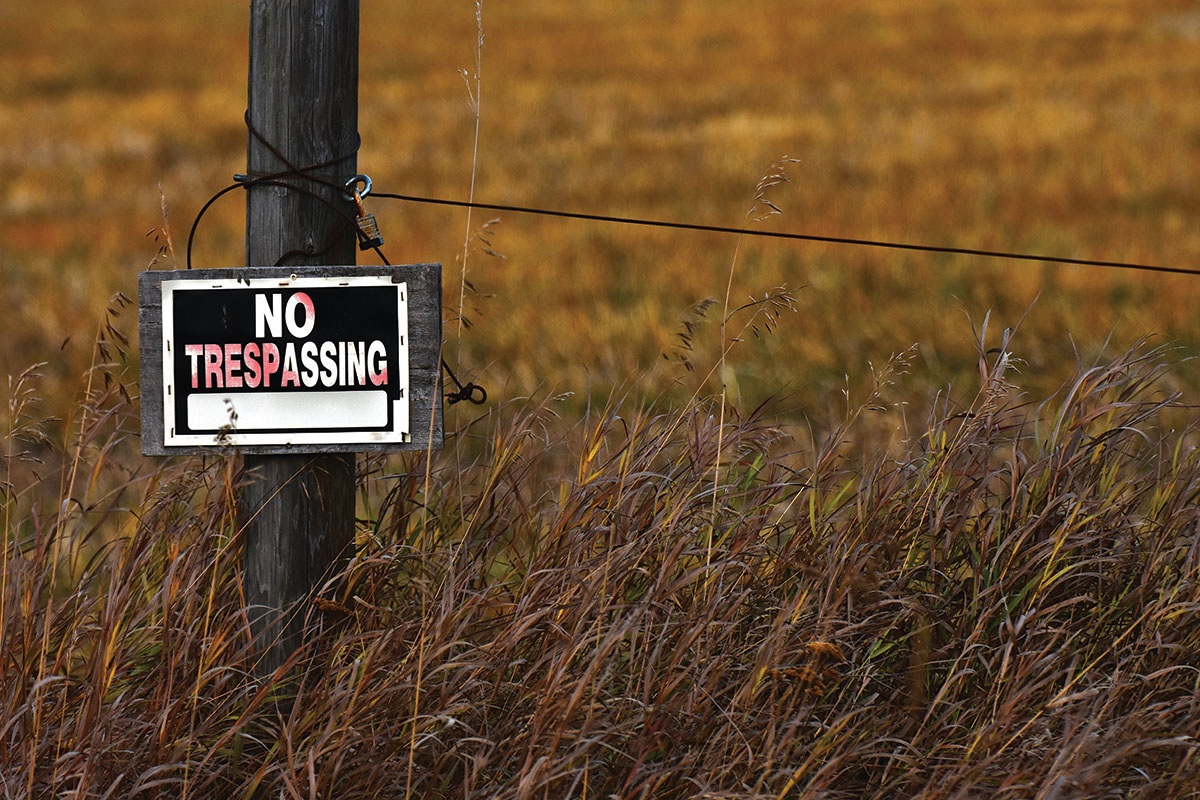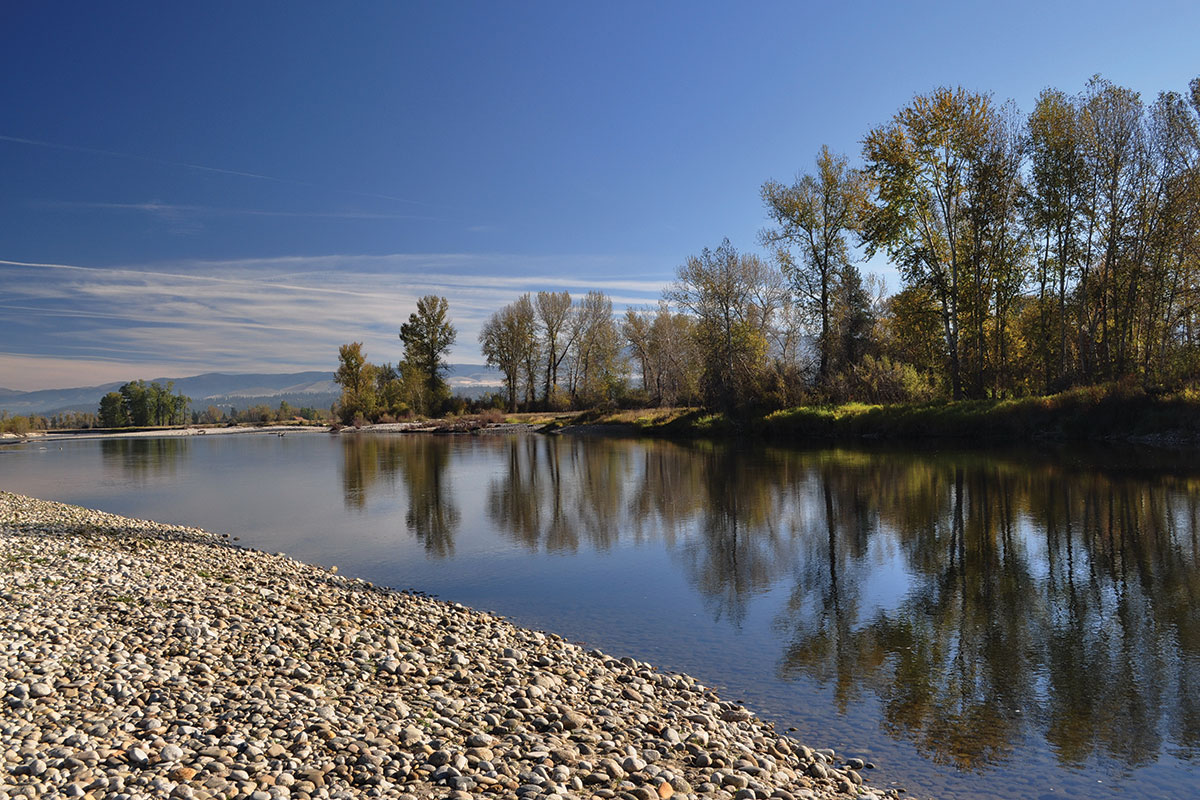Among the many ambitions for a revived and expanded public trust doctrine has been a call for its application to wildlife and wildlife habitat. A 2010 report published by the Wildlife Society, titled “The Public Trust Doctrine: Implications for Wildlife Management and Conservation in the United States and Canada,” is illustrative. The first sentence asserts: “The Public Trust Doctrine, with its origin in Roman civil law, is an essential element of North American wildlife law.”
But asserting something does not make it so. With rare exceptions, courts have declined to extend the public trust doctrine to upland wildlife and their habitat. As a matter of law, a major challenge for those advocating application of the doctrine to wildlife (beyond fish in navigable waters) is overcoming the narrow precedent of the much more limited common law precedent.
Applying the public trust doctrine to wildlife or its habitat would have major implications. For one, it would effectively create a public easement on private property in the same way the common law recognizes a public easement over and on privately owned submerged and riparian lands on navigable waters. Such a shift in the law would upset long-settled expectations, result in a massive taking of private property, and create a powerful disincentive for private wildlife conservation initiatives.
The Public Trust Doctrine
The public trust doctrine has its origins in English law and was later applied in the North American colonies as well as part of the common law by the individual states after the American Revolution. Historically, the public trust doctrine guaranteed a public right to commercial navigation and fishing on navigable waters. Over the past few decades, however, courts in several states have expanded the doctrine beyond its historical reach. But despite frequent proposals to apply the doctrine to upland resources, including wildlife, those expansions have been limited to public uses of waters.
The rights guaranteed by the public trust doctrine are understood to have existed from time immemorial. As a result, judicial expansions of the doctrine have the effect of curtailing vested private property rights. Takings claims under the Fifth Amendment to the U.S. Constitution (and under similar provisions in every state constitution) are thus circumvented because the private rights are, by definition, subject to the theoretically preexisting public rights.
Broadening the set of preexisting public rights protected by the doctrine dramatically expands the scope of regulation. What might have been considered a regulatory taking—in which the value of someone’s property is diminished as a result of regulation—is rendered a case in which the property owner never possessed the right claimed to be taken. If property owners never had a right to exclude those seeking access to such resources, for example, there can be no taking when the government enforces that public right.
Over the past few decades, courts in several states have expanded the doctrine beyond its historical reach. But those expansions have been limited to public uses of water.
In addition, an expanded public trust doctrine would impose affirmative duties on government to act for the purpose of protecting public rights. Failure of governments to meet such duties can, in turn, result in enforcement actions in the courts. Thus, an expanded public trust doctrine increases the power of the courts and puts courts in the position of overriding the actions of the legislative and executive branches of government.
For advocates of a broader government role in the conservation and management of wildlife, the public trust doctrine thus holds great promise—as long the historic doctrine can be expanded beyond what legal scholar Joseph Sax called its “historical shackles.” It expands the power of government, imposes duties of government to exercise those powers, and eliminates the costs of defending against or compensating for takings claims.
The Myth of State Ownership
The assertion that the public trust doctrine applies—or should apply—to wildlife rests on shaky legal ground. A familiar argument in favor of applying the public trust doctrine to wildlife has been that states own wildlife on behalf of the public. But the argument is founded on a mistaken understanding of the law relating to ownership of wildlife. Under the common law, wildlife is considered res nullius—meaning it is unowned until it is captured and reduced to private possession. Thus, living wildlife species are neither owned by the state nor by private individuals.
The concept of state ownership emerged from several state statutory and constitutional declarations of public or state ownership. It was encouraged by dicta in the 1896 U.S. Supreme Court case of Geer v. Connecticut but later dismissed in 1948 in Toomer v. Witsell “as but a fiction expressive in legal shorthand of the importance to its people that a State have power to preserve and regulate the exploitation of an important resource.” In 1979, the Supreme Court overruled Geer in Hughes v. Oklahoma, stating that “the general rule we adopt in this case makes ample allowance for preserving . . . the legitimate state concerns for conservation and protection of wild animals underlying the 19th-century legal fiction of state ownership.”
Thus, the states’ authority with respect to wildlife derives from their police power, not ownership, and is therefore limited by the constitutional enumeration of federal powers and the constitutional protections of private property. Clearly, states can regulate the hunting of wildlife, including on private lands, but they cannot impose regulations that would result in an unconstitutional taking of those lands. Correspondingly, private landowners can prohibit and permit access to their lands by hunters, just as they can control access for any other purpose, with very narrow exceptions.
Thus, the concept of the “public trust” imbued in the North American Model of Wildlife Conservation is only tangentially related to the common law public trust doctrine. Both have to do with the public’s interest in the use and conservation of natural resources. But in the case of wildlife, the public merely “trusts” that its interests in wildlife conservation will be advanced, like all other democratically declared interests, by a responsible and accountable government; whereas the public trust doctrine recognizes public rights in the form of easements on navigable waters and their associated submerged lands. The public trust of wildlife conservation is enforceable only at the ballot box. The public rights guaranteed by the public trust doctrine are enforceable in the courts.
Public vs. Private Management
The usual case for expanding the public trust doctrine to include upland wildlife and habitat is based not on an assertion of state wildlife ownership, but rather on a presumption in favor of public management of those resources. But even assuming that public wildlife managers have all the best knowledge and tools, a purely public management approach is destined to fall short in a nation in which 60 percent of the land is privately owned (ranging from 98.5 percent in Rhode Island to 4.2 percent in Alaska). Private lands provide vast areas of wildlife habitat and have the capacity to provide much more if they are provided the right incentives to do so. A presumption of exclusive public management and a public trust doctrine that implies unlimited state authority to regulate on private lands has the opposite effect—it gets the incentives for private landowners wrong.
Take the case of the Mitchell Slough, located adjacent to the Bitterroot River in western Montana. For a century, private owners of the lands on which the slough is located invested in various improvements to create a reliable supply of water during the irrigation season. No one questioned that the private landowners had exclusive access to the slough’s waters and could exclude others from their lands. Beginning around the turn of the 21st century, some of the farms on the slough were acquired as vacation properties, and the new owners continued to invest in maintaining and improving the flow through the slough—but now for the purpose of providing habitat for fish and other wildlife. As the fishery in the slough improved, members of the public ventured off the Bitterroot and onto the slough in pursuit of better fishing. When the slough’s owners sought to exclude the public as trespassers on their private land, controversy over access to the waters eventually led to a 2008 case in the Montana Supreme Court.
In Bitterroot River Protective Association v. Bitterroot Conservation District, the Montana court ruled that the public does have a right of access to the Mitchell Slough. Although the ruling held that the Mitchell Slough is a “natural body of water” under the state’s Stream Access Law of 1985, the outcome was firmly rooted in the Montana Supreme Court’s earlier decision in Montana Coalition for Stream Access v. Curran. That decision held that “under the public trust doctrine and the 1972 Montana Constitution, any surface waters that are capable of recreational use may be so used by the public without regard to streambed ownership or navigability for nonrecreational purposes.” The ruling constituted a massive expansion of the historic common law doctrine, in terms of both waters and lands affected and uses to which the public has a right.
An obvious negative consequence of the Montana Supreme Court’s ruling in the Mitchell Slough case was that the landowners had much less of an incentive to invest in maintenance and improvement of the fishery and wildlife habitat. Although they could still exclude the public from accessing the slough across their lands, they could not preclude access from the Bitterroot River nor manage fishing practices, even though they continue to own the lands underlying and adjacent to the slough. The landowners would have no more incentive to invest in a fishery freely available to the public than to invest in crops and livestock that could be harvested by any passerby. Of course, a cruel irony in this result is that the privately financed improvement of the Mitchell Slough benefitted the fishery in the Bitterroot River, to which the slough is connected and to which the public always had a right of access under the historic public trust doctrine.
Judge-Made Law?
It is well settled that state governments, exercising their police powers, and the federal government, within its constitutionally enumerated powers, have authority to regulate the taking of wildlife on private lands. These powers are exercised at the discretion of state legislatures and Congress, subject to the limitations imposed by state and federal constitutional guarantees of due process, equal protection, and just compensation for takings of private property. To the extent laws enacted pursuant to these regulatory powers are thought to be inadequate—because of either political or constitutional obstacles—some wildlife-conservation interests have advanced theories that would circumvent both politics and the Constitution. An extension of the public trust doctrine to upland wildlife would establish senior public rights and thus render takings objections moot—the government cannot take what the individual does not own. An expanded public trust doctrine also circumvents political opposition by shifting decisions from legislatures to the courts.
A negative consequence of the Montana Supreme Court’s ruling in the Mitchell Slough case was that the landowners had less of an incentive to invest in maintenance of the fishery and wildlife habitat.
The usual justification for judicial expansion of the public trust doctrine is that common law courts have always had authority to adapt the law to changing circumstances and evolving public values and priorities. The common law is often referred to as judge-made law. But the common law has never been judge-made law in the same sense that statutory law is made by legislatures. Legislatures have authority to pass, amend, or repeal whatever laws a majority supports—in other words, to make public policy. Common law courts do not have authority to make public policy. Rather they are in the business of translating the customs and practices of society into concrete rules for application in particular cases, subject to the authority of the legislature to limit, repeal, or replace those rules. As social customs and practices change over time, common law courts have adapted their earlier precedents accordingly. But with rare exceptions, common law courts have not purported to have the authority to amend the law on the grounds of their or others’ policy preferences.
This historic distinction between the legislative and judicial roles is particularly important where a constitutional separation of powers exists. Even if the English common law courts occasionally took it upon themselves to enact new laws from whole cloth, American state and federal courts are constrained by the constitutions under which they were created. Although there is not always a clear line between judicial lawmaking and judicial adaptation of the law to shifting custom and practice, there can be little argument that application of the public trust doctrine to wildlife constitutes judicial lawmaking in violation of the separation of powers. It also constitutes an affront to representative democracy, particularly in the federal system and in those states where judges are not elected. Surely elected legislatures have better authority than courts to speak for the public and declare what constitutes the public interest.
Putting aside these principled, constitutional objections to judicial expansion of the public trust doctrine, an activist, lawmaking judiciary undercuts the rule of law and thereby upsets the legitimate expectations of those regulated by the law. Property owners have only the law and the goodwill of their neighbors to rely upon in making investments, including investments in wildlife conservation. As the Mitchell Slough case makes clear, judicial expansion of public rights in the name of the public trust doctrine upsets expectations based on preexisting rules and can discourage future investments in wildlife habitat improvement and protection—a prospect that should unsettle wildlife advocates of all persuasions.





